’12 Vintage Report and ’13 Midwest Growing Season Outlook
This is the first installment of a state-by-state report on the 2012 vintage in the Midwest along with assessments of the 2013 growing season. This article features Missouri, Nebraska, Michigan, Minnesota and Illinois. In coming weeks, look for reports from other areas that Midwest Wine Press covers.
Missouri, Chuck Dressel, President, Mount Pleasant Winery
To say that Chuck Dressel at Mount Pleasant Winery in Augusta, Missouri is excited about the winery’s 2012 Vignoles is an understatement. “The Vignoles we made in stainless this year is unbelievably concentrated. The wine is just opening up and it’s very exciting to watch it develop,” he said. “The fresh pineapple aromas are perfect; when we open the tank, the whole production area smells like fresh-cut pineapple for hours.”
Considering the horrible drought Missouri and much of the Midwest suffered last summer, it’s a relief that many wineries are reporting exceptional wines, especially whites, from the 2012 harvest.
Drought and frost damage reduced wine grape yields all across the country’s midsection, but wine quality is reportedly good according to a number of winery professionals who spoke with Midwest Wine Press. Summarizing the trade-off that characterized 2012 , Dressel said, “the 2012 pressing had low gallons per ton, but it had high flavor per ton.”
In Mount Pleasant’s case, the 2012 drought made the growing season less demanding, according to Dressel. “It was easier for us to grow grapes last year; there was less disease pressure because a lot of the normal fungus just burned up in the 115 degree heat.”
Mount Pleasant has a 71 acre vineyard with 59 acres producing fruit. “We don’t export a single grape,” Dressel said, “and it will be a while before we overproduce.” Twelve grape varieties are used to make the estimated 120,000 gallons of wine Mount Pleasant sells each year at its tasting rooms in Branson and Augusta. The winery also purchases grapes from other Augusta AVA growers and from Arkansas vineyards.
Mount Pleasant makes two styles of Norton, a reserve for $31 a bottle and a table wine for $12 per bottle. In regard to the 2012 Norton, Dressel said, “It’s too early to tell about Norton, but it looks promising. Our lighter style 2012 reds will be ready in August or September.”
When asked if the high quality and relatively low supply of some 2012 wines could effect retail prices, Dressel said he would wait before making any pricing decisions. “Overall, quality effects supply and demand. Currently, we don’t plan to raise prices, but with upper end, hand crafted wines the market could intervene. If we’ve sold half the vintage three months after release, we are going to have to look at prices.”
Dressel said east-central Missouri soils are currently starting to rehydrate but consistent rain is needed in the next 90 days to make up for the extreme drought of 2012.
Nebraska, Geno Bonomo, General Manager, Feather River Vineyards
Geno Bonomo, general manager of Feather River Vineyards in North Platte Nebraska said the 2012 harvest was substantially reduced by frost damage last year. Feather River is one of the largest grape growers in Nebraska with 37 acres under cultivation.
“We usually get at least a 50 ton harvest, but last year we were down to about 27 tons,” Bonomo said. The grapes Feather River grows include La Crescent, Marquette, St. Croix, Seyval, Foch and Frontenac, Much of the fruit in Feather River’s ’12 crop was off secondary buds, Bonomo said.
Bonomo said that Feather River uses all the grapes they grow to make estate wines which all finish dry. “The sugar was up in our grapes last year because of all the heat so our 2012 wines will be a little sweeter than usual,” he said. Feather River has a drip irrigation system so they were not heavily impacted by the drought.
Feather River is one of the few wineries in Nebraska to grow Marquette and produce wine from this University of Minnesota varietal. Their 2011 Marquette won a gold medal at the Long Beach Grand Cru Wine Competition.
In regard to soil moisture content going into the growing season, Bonomo reports that there has been very little snow this winter. “Easily less than three inches of precipitation this winter which is not good at all. However, other parts of Nebraska have fared better,” he said.
The majority of Nebraska is currently in “exceptional” drought conditions according to the USDA Drought Monitor. The southeastern portion of the state has “extreme” drought conditions which are slightly better.
Michigan, Todd Robbins, Vineyard Manager, Fenn Valley Winery
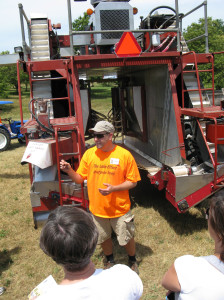
Todd Robbins of Fenn Valley Winery explains his BEI mechanical grape harvester to guests of the winery’s June 2012 Open House.
According to vineyard manager Todd Robbins, “Yields were decent last year because we keep twice the buds we need to get a full crop. We also took other preventative measures last spring; we started fires and we turned on our irrigation during frost events. But it took three times as many buds last year to get the same crop we got in 2011. We had a lot of primary bud mortality.”
In some respects, Robbins said he still dealing with the aftermath of the 2012 freeze damage this year. “Normally, we tie down our best three buds and leave three more for insurance. Then, during shoot thinning, we normally cut off half the buds. But last year we could not do that because of frost damage. Now we don’t have desireable cordons this year because shoots that would have been spurs this year were frosted off. We have a lot of gaps in our vines this year. Our pruning costs are definitely going to be higher for 2013,” he said.
One piece of good news is that it’s not 80 degrees in March this year as it was in Michigan at this time last year. In the Winery’s newsletter, owner Doug Welsch said that the Fenn Valley 2012 late harvest Vignoles was the “best ever.” He also noted the excellent quality of the early season 2012 white wines like Sauvignon Blanc and Pinot Grigio.
Minnesota, Drew Horton, Winemaker, Chankaska Creek Ranch & Winery
According to Chankaska winemaker Drew Horton, “the 2012 wines we have in the barrels now are world-class, I really believe that.” Horton came to Chankaska Creek in late 2010 from the Santa Ynez Valley in California to help start Chankaska Creek. Horton said part of the appeal of coming to Minnesota was the opportunity to work with cold climate grapes from the University of Minnesota including Marquette.
Horton said that the overall quality of the 2012 Minnesota Maquette harvest was better than 2011. However, he reported high pH in some of the Marquette grapes he received last year. (Chankaska buys Marquette from eight local growers and maintains two blocks of the red hybrid grape in its own vineyard.) “Some of the Marquette we received had alarmingly high pH in the 3.8-4.0 range while other shipments had what you’d have to call perfect Pinot chemistry; 28 brix, 3.6 pH and seven grams of acid.”
The variability of the same varietal in the same Minnesota growing area during 2012 could be attributed to several factors, Horton believes. “Different growers manage their canopies differently,” he said. “Plus, we had a lot of problems with black rot last year. With the lack of real cold during the 2011-2012 winter, some of the molds overwintered and then we had a spring with lots of rain.”
Like many of the new cold climate grapes, most Marquette vines are less than four years old. Horton believes the quality of Minnesota fruit will continue to improve: “When we have 20-year-old Marquette vines, you are going to see wines that are out of this world,” Horton said.
Horton said that he was initially concerned about some of the Frontenac grapes he received last year. “Many of the Frontenac clusters had four or five hard, green berries and the rest were completely ripe,” he said. “I was concerned that the wine would be bitter or astringent, but our 2012 Frontenac has turned out very well,” he said.
According to the University of Minnesota, in southeast, west-central, and north central Minnesota, winter precipitation has been well above average. However, precipitation deficits over the past nine and one-half months are in excess of ten inches in some southwest and south central Minnesota counties.
Illinois, Barb Rush, Owner, Kite Hill Vineyards
Southern Illinois experienced extreme drought last summer with the hottest summer on record. As a result, Kite Hill Vineyard had to drop 40% of their fruit last summer to keep grapevines from becoming overstressed. Therefore wine production this year is also down 40%, according to Kite Hill owner Barb Bush.
The good news is that 2012 vintage has “intensity that is incredible” according to Bush. She is particularly excited about an especially fruit forward Chardonnel that has a lot of apple and pear flavors.
Kite Hill also make three types of Chambourcin; a full-bodied red, a reserve with a burnt oak finish and a White Chambourcin that is made by not letting the fruit sit on its skins. Winemaker Scott Albert won a gold medal for the winery’s Chambourcin at the 2011 Illinois State Fair Wine Competition. Bush said she expects the 2012 Chambourcins to have intense strawberry flavors with a little cherry on the finish.
Kite Hill tends between 5 and 6 acres of grapes on their vineyard which was planted in ’98. Normal harvests are between 20 and 25 tons consisting of various hybrid grapes including Vignoles and Chancellor. Like many Southern Illinois wineries, Kite Hill also grows Cab Franc
Bush said her vines seem to have over winertered well. She said the vineyard soil is muddy this March from regular winter rain and snow which is a welcome relief after the drought of 2012.

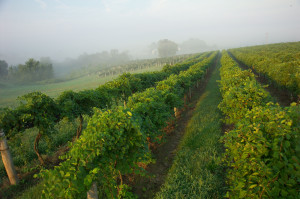

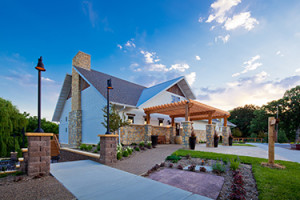
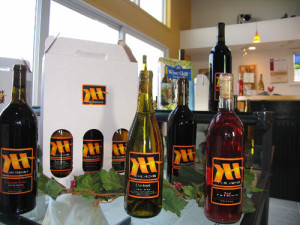
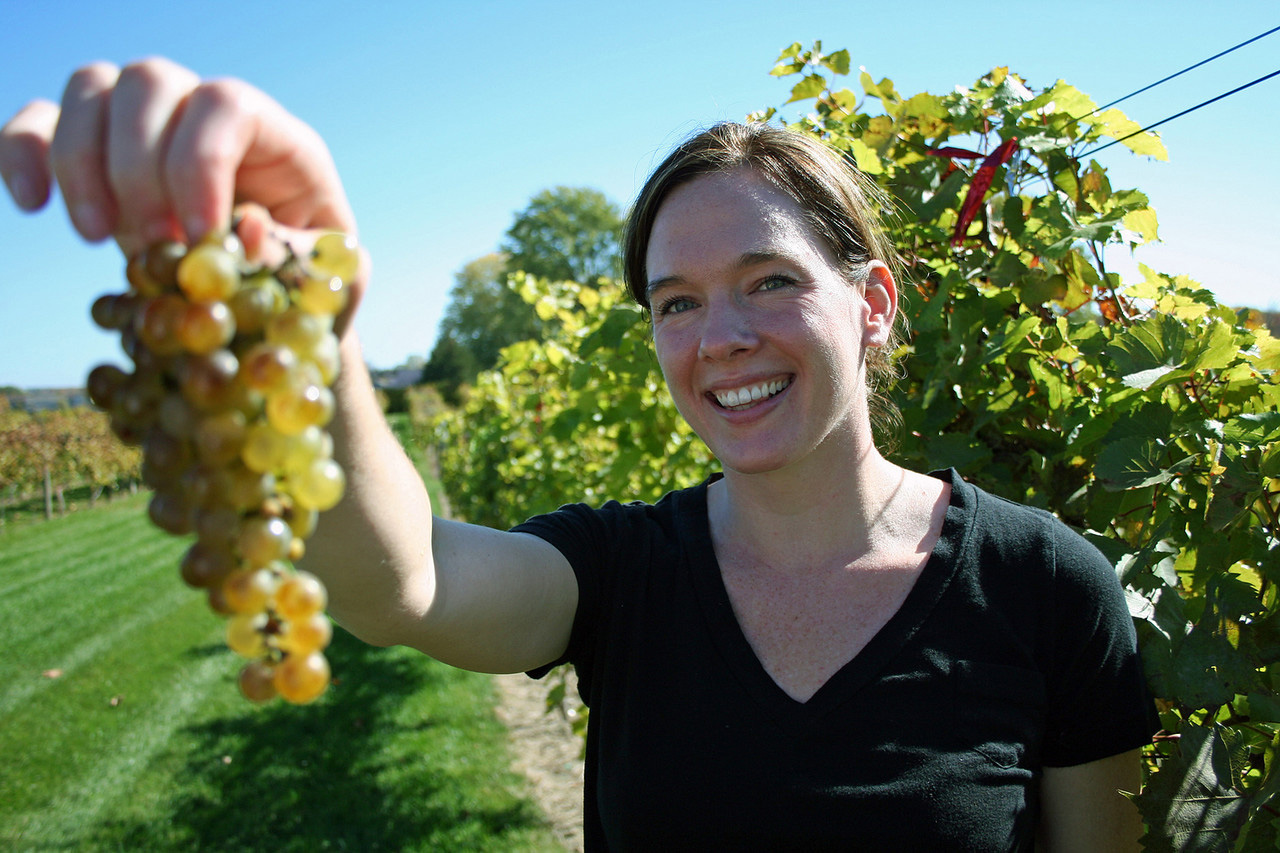

Enjoyed your March ’13 article on the ’12 Report and ’13 Outlook. It is good to learn how other growers adjust to changing conditions and how my methods compare. Thanks. Frank LaFoon, LaFoon Vineyards, Shawnee Hills AVA, Anna, Il